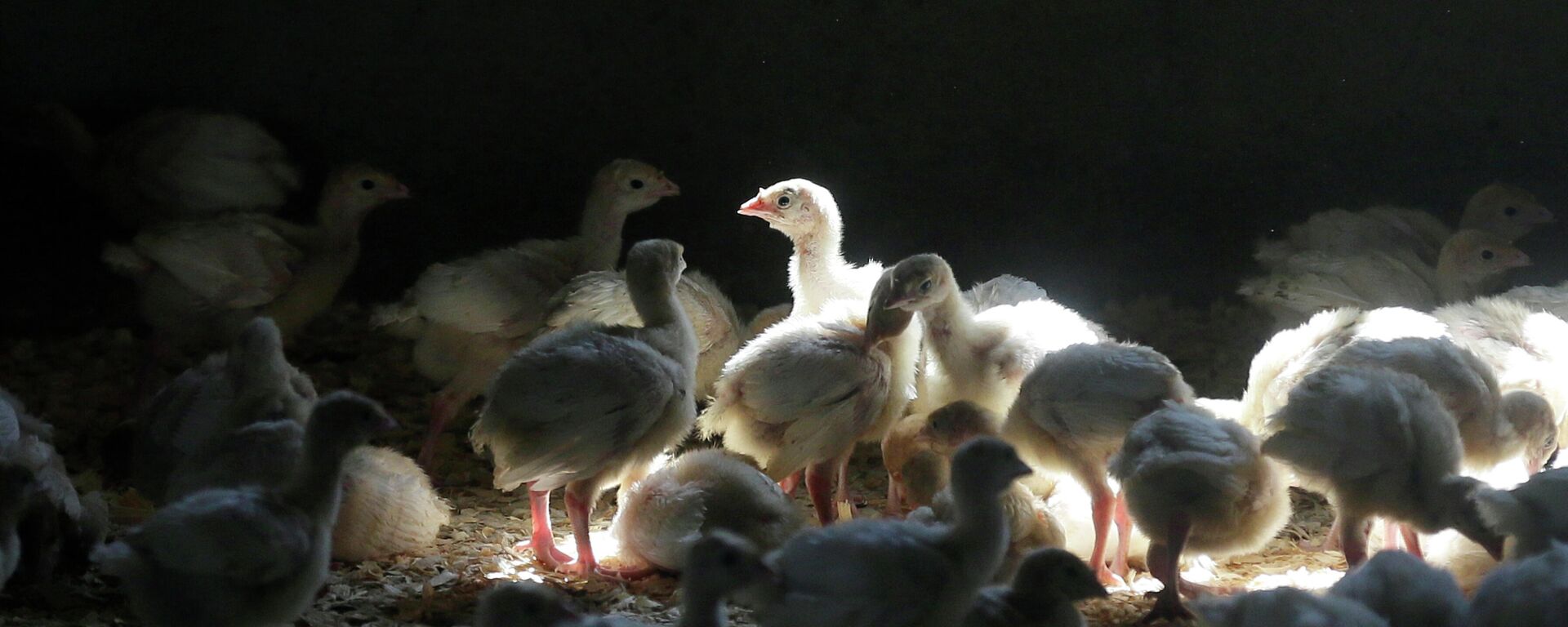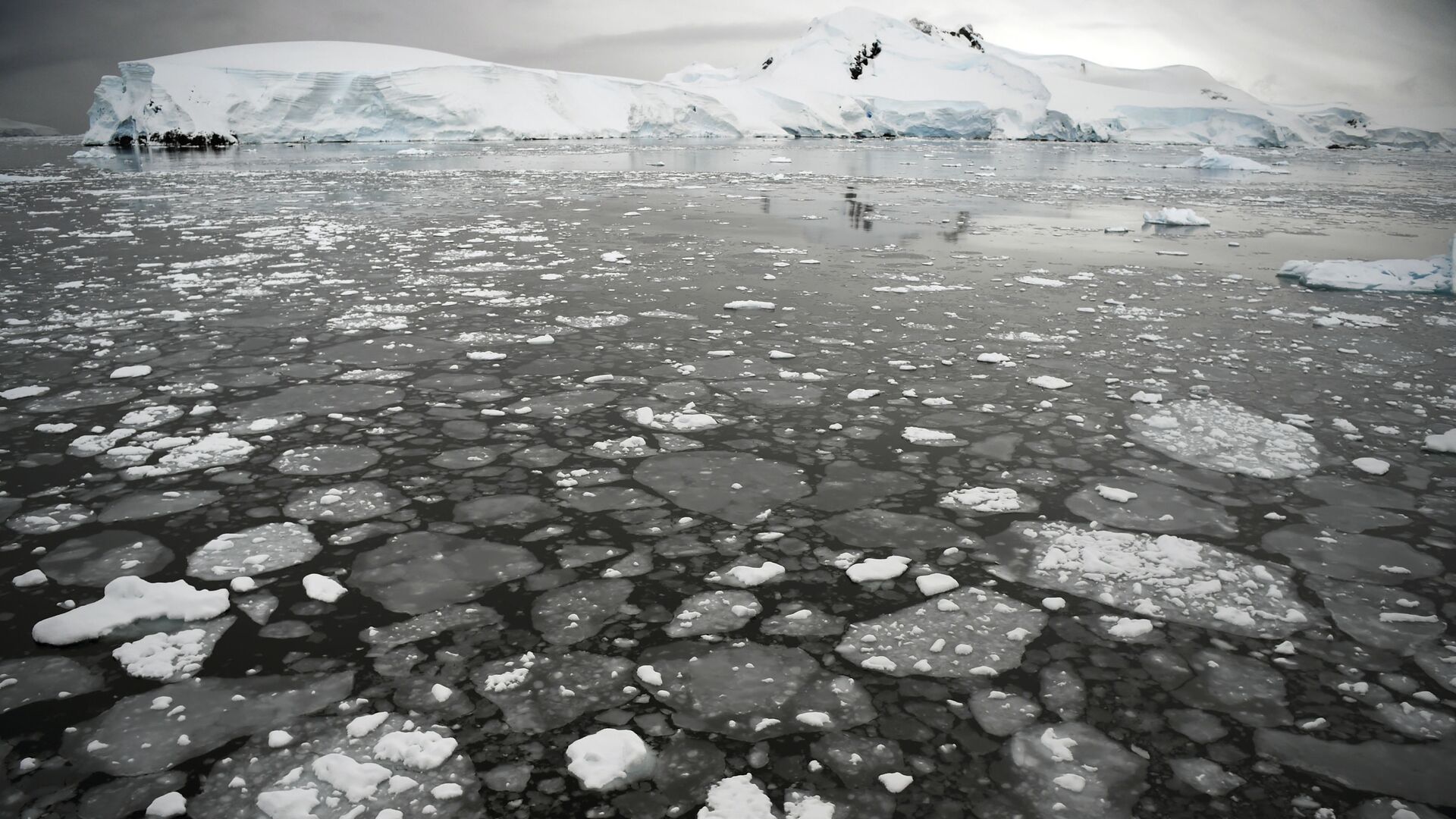https://sputnikglobe.com/20231025/catastrophic-arrival-bird-flu-strikes-antarctic-threatening-unique-wildlife-1114462771.html
Catastrophic Arrival: Bird Flu Strikes Antarctic for First Time, Threatening Unique Wildlife
Catastrophic Arrival: Bird Flu Strikes Antarctic for First Time, Threatening Unique Wildlife
Sputnik International
The deadly H5N1 avian flu virus has breached the Antarctic, raising grave concerns for isolated penguin and seal populations that have never encountered this lethal virus before.
2023-10-25T03:23+0000
2023-10-25T03:23+0000
2023-10-25T03:25+0000
world
avian flu
bird flu
antarctic
british antarctic survey
h1n1
science & tech
https://cdn1.img.sputnikglobe.com/img/105549/65/1055496597_0:0:3090:1739_1920x0_80_0_0_df5314ad8f08b36f1499df31bd1054d0.jpg
The deadly avian flu has breached the Antarctic, raising grave concerns for isolated penguin and seal populations that have never encountered this lethal virus at any time prior.The British Antarctic Survey (BAS) conducted tests after noticing unexplained mortality in the bird populations on Bird Island. BAS science manager Ashley Bennison expressed sadness over the confirmation of the virus's presence, stating that the full impact remains uncertain.A risk assessment by the Scientific Committee on Antarctic Research identified fur seals, sea lions, skuas, and gulls as the most vulnerable to the disease, followed by penguins, birds of prey, sheathbills, and giant petrels. Dr. Meagan Dewar, the chair of the Antarctic Wildlife Health Network, warned of the potential "catastrophic breeding failure" that could devastate multiple wildlife species in the region.The report emphasizes the need for ongoing disease surveillance programs to identify new and emerging pathogens, given the concerning arrival of H5N1 in the Antarctic. The virus' rapid spread through South America, spanning almost 4,000 miles in three months, was largely facilitated by the migration patterns of wild birds, making its arrival in South Georgia an inevitable concern.Following the positive tests on Bird Island, fieldwork involving animal handling has been temporarily suspended, and stringent precautions are being taken to prevent further transmission.
https://sputnikglobe.com/20231011/scientists-use-crispr-gene-editing-tech-on-chickens-to-fight-bird-flu-1114080774.html
antarctic
Sputnik International
feedback@sputniknews.com
+74956456601
MIA „Rossiya Segodnya“
2023
News
en_EN
Sputnik International
feedback@sputniknews.com
+74956456601
MIA „Rossiya Segodnya“
Sputnik International
feedback@sputniknews.com
+74956456601
MIA „Rossiya Segodnya“
h5n1 avian flu, h5n1 virus, avian flu in antarctic region, saving birds, british antarctic survey tests one point
h5n1 avian flu, h5n1 virus, avian flu in antarctic region, saving birds, british antarctic survey tests one point
Catastrophic Arrival: Bird Flu Strikes Antarctic for First Time, Threatening Unique Wildlife
03:23 GMT 25.10.2023 (Updated: 03:25 GMT 25.10.2023) The virus was discovered in brown skuas on Bird Island, part of the British overseas territory of South Georgia and the South Sandwich Islands, and experts fear this could lead to a "catastrophic breeding failure" for the region's vulnerable wildlife.
The deadly avian flu has breached the Antarctic, raising grave concerns for isolated penguin and seal populations that have never encountered this lethal virus at any time prior.
The British Antarctic Survey (BAS) conducted tests after noticing unexplained mortality in the bird populations on Bird Island. BAS science manager Ashley Bennison expressed sadness over the confirmation of the virus's presence, stating that the full impact remains uncertain.
Bird Island, known as one of the planet's richest wildlife sites, hosts numerous endangered bird species, along with 50,000 pairs of breeding penguins and 65,000 pairs of fur seals.
The island is located off the north-west tip of the South Georgia Island, about 600 miles south-east of the Falkland Islands.
A risk assessment by the Scientific Committee on Antarctic Research identified fur seals, sea lions, skuas, and gulls as the most vulnerable to the disease, followed by penguins, birds of prey, sheathbills, and giant petrels.
Dr. Meagan Dewar, the chair of the Antarctic Wildlife Health Network, warned of the potential "catastrophic breeding failure" that could devastate multiple wildlife species in the region.
The report emphasizes the need for ongoing disease surveillance programs to identify new and emerging pathogens, given the concerning arrival of H5N1 in the Antarctic. The virus' rapid spread through South America, spanning almost 4,000 miles in three months, was largely facilitated by the migration patterns of wild birds, making its arrival in South Georgia an inevitable concern.

11 October 2023, 00:52 GMT
Following the positive tests on Bird Island, fieldwork involving animal handling has been temporarily suspended, and stringent precautions are being taken to prevent further transmission.



